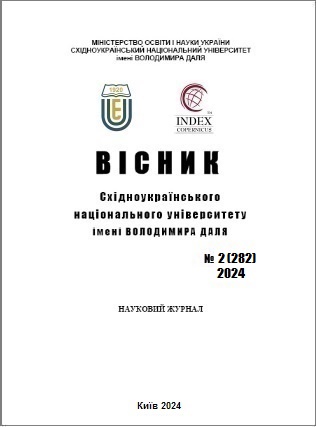Patterns of deformation of the pneumatic spring of the high-speed rolling stock depending on the internal pressure and the applied external static load
DOI:
https://doi.org/10.33216/1998-7927-2024-282-2-70-77Keywords:
pneumatic spring, rubber cord shell, deformation, force, internal pressureAbstract
The basis of safe operation of modern high-speed railway rolling stock is compliance with its dynamic and traffic safety indicators. The purpose of the article is to study the patterns of deformation of the rubber-cord shell of the pneumatic spring of modern high-speed railway rolling stock depending on the magnitude of the applied external load and internal pressure in the spring. To achieve this goal, a special design of the stand and a program of experimental tests of the pneumatic spring were developed, which involved measuring vertical and horizontal deformations using modern measuring technologies. The change in the values of internal pressure and applied external load took place with the help of a high-pressure compressor and a hydraulic jack, respectively. High-frequency linear displacement sensors were used to measure vertical and horizontal deformations. The internal pressure in the spring changed in steps of 0.5 atm. On the basis of the conducted research, the dependence of the vertical movement of the fastening plate, as well as the vertical and horizontal deformation of the lower part of the rubber-cord shell on the value of the manometric pressure in the pneumatic spring was constructed. It was established that an increase in the value of the manometric pressure in the pneumatic spring leads to a decrease in the maximum force of the external load, which is necessary to deform the spring to its limit value. A certain agreement was noted between the deformation of the rubber-cord sheath in the horizontal direction with the difference between the vertical movement of the fastening plate and the deformation of the lower part of the rubber-cord sheath in the vertical direction. The scientific novelty of the obtained results lies in the experimental establishment of the patterns of deformation of the rubber-cord shell of the pneumatic spring in the vertical and horizontal directions depending on the change in pressure in the pneumatic spring and the applied external load. That will allow to more accurately model the operation of the pneumatic spring taking into account the deformation characteristics of the rubber-cord shell and determine its dynamic characteristics, which is necessary at the stage of designing modern high-speed railway rolling stock when determining the safe conditions of its operation.
References
1. Кузишин А. Я., Костриця С. А., Соболевська Ю. Г., Батіг А. В. Світовий досвід створення математичних моделей пневматичної ресори: переваги та недоліки. Наука та прогрес транспорту. 2021. № 4 (94). С. 25–42. DOI: 10.15802/stp2021/245974
2. Docquier N., Fisette P., Jeanmart H. Multiphysic modelling of railway vehicles equipped with pneumatic suspensions. Vehicle System Dynamics. 2007. Vol. 45. Iss. 6. P. 505–524. DOI: https://doi.org/10.1080/00423110601050848
3. KuzyshynA., KovalchukV., SobolevskaYu. Studying the diagrams "force - deformation" of a pneumatic spring of a modern rolling stock at increased speeds. MATEC Web of Conferences. 2024. 390. 04006. https://doi.org/10.1051/matecconf/202439004006
4. Kuzyshyn A., Kovalchuk V., Stankevych V., Hilevych V. Determining patterns in the influence of the geometrical parameters of the connecting pipeline on the dynamic parameters of the pneumatic spring of railroad rolling stock. Eastern-European Journal of Enterprise Technologies. 2023. 1/7(121). P. 57–65. https://doi.org/10.15587/1729-4061.2023.274180
5. Oda N., Nishimura S. Vibration of air suspension bogies and their design. Bulletin of JSME. 1970. Vol. 13. Iss. 55. P. 43–50. DOI: https://doi.org/10.1299/jsme1958.13.43
6. Pellegrini C., Gherardi F., Spinelli D., Saporito G., Romani M. Wheel–rail dynamic of DMU IC4 car for DSB: modeling of the secondary air springs and effects on calculation results. Vehicle System Dynamics. 2006. Vol. 44. Iss. sup1. P. 433–442. DOI: https://doi.org/10.1080/00423110600872960
7. Aizpun M., Vinolas J., Alonso A. Using the stationary tests of the acceptance process of a rail vehicle to identify the vehicle model parameters. Journal of Rail and Rapid Transit. 2013. Vol. 228. Iss. 4. P 408–421. DOI: https://doi.org/10.1177/0954409713478592
8. Berg М. A three-dimensional airspring model with friction and orifice damping. Vehicle System Dynamics. Vol. 33. Iss. sup1. P. 528–539. DOI: https://doi.org/10.1080/00423114.1999.12063109
9. Chen J.-J., Yin Z.-H., Rakheja S., He, J.-H., Guo K.-H. Theoretical modelling and experimental analysis of the vertical stiffness of a convoluted air spring including the effect of the stiffness of the bellows. Proceedings of the Institution of Mechanical Engineers, Part D: Journal of Automobile Engineering. 2017. Vol. 232. Iss. 4. P. 547–561. DOI: https://doi.org/10.1177/0954407017704589
10. Li X., Li T. Research on vertical stiffness of belted air springs. Vehicle System Dynamics. 2013. Vol. 51. Iss. 11. P. 1655–1673. DOI: https://doi.org/10.1080/00423114.2013.819984
11. Li X., He Y., Liu W., Wei Y. Research on the vertical stiffness of a rolling lobe air spring. Proceedings of the Institution of Mechanical Engineers, Part F: Journal of Rail and Rapid Transit 2015. Vol. 230. Iss. 4. P. 1172–1183. DOI: https://doi.org/10.1177/0954409715585370
12. Qing O., Yin S. The non-linear mechanical properties of an airspring. Mechanical Systems and Signal Processing. 2001. Vol. 17. Iss. 3. P. 705–711. DOI: https://doi.org/10.1006/mssp.2001.1434
13. Xu W., He L., Shuai C. Stiffness calculation and dynamic simulation of air spring. ASME 2005 International Design Engineering Technical Conferences and Computers and Information in Engineering Conference (California, 24-28 Sep 2005). California, 2005. P. 1395–1399. DOI:https://doi.org/10.1115/DETC2005-84338.

